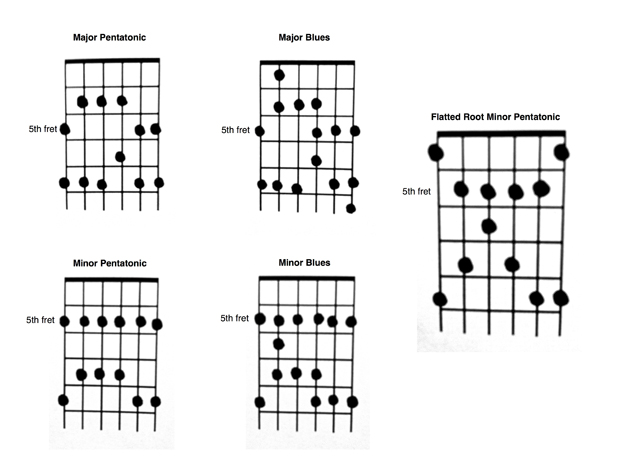Turn up the heat in your guitar solos in five easy steps
Learn how to give your solos elements that'll keep audiences listening

Variety is the spice of life. Musically speaking, I think “spice” translates to a certain amount of dissonance. Dissonance is a tension resulting from the lack of harmony among musical notes.
In this lesson I discuss a few options I use when playing over dominant 7 chords. I’ll take you through a methodical process of using scales that progressively use more and more dissonant notes. It will be this intermingling of consonant and dissonant sounds that will add a lot of interesting elements to your playing and give your solos the contrast that will keep your audience listening.
So you can immediately implement these ideas, I’ll be using only some basic pentatonic and blues scales that you likely already know, as well as a couple of ideas that might not yet be a part of your vocabulary. We’ll use A7 as our key center in these examples.
Note: I highly recommend you find a backing track with a dominant 7th key center to practice these ideas over. This will surely help you internalize how these scales sound and contrast with each other in a musical context. YouTube has a bunch!
An A7 chord is best described as an A major triad with a minor 7th. This chord is spelled A-C#-E-G. Overall, its tonality is major, but the minor 7th note in the chord lends itself to some minor approaches as well. Let's dig in …
The A major pentatonic scale could be considered the most consonant match for this chord, as the scale includes the A major triad. While a little vanilla for some, it works perfectly.
To add a just a little dissonance, the A major blues scale can be used. This scale includes all the “right notes” from the major pentatonic scale but adds a minor 3rd to the mix. This minor 3rd doesn’t stand out too much when played briefly as a passing tone, but if you place some focus on it, it will surely grab the listener’s attention before you resolve it to the next note in the scale. With a jam track, try switching from the major pentatonic scale and the major blues scale.
It’s this minor 3rd note that leads us to a very common combo: using the minor pentatonic scale over the dominant 7 chord. The minor pentatonic scale includes the root, 5th and minor 7th of the dominant 7 chord we’re playing over, but the minor 3rd is dissonant when heard against the major 3rd in the chord. It is this dissonance that often leads us to bend the minor third up to the major third pitch, giving us that oh-so bluesy sound we love.
I often think of players like Jimmy Page and Jimi Hendrix when I hear this being played, but since the minor pentatonic scale is one of the first scales guitar students learn, chances are you are already doing this. With a jam track, try switching from the major pentatonic to the major blues—and now the minor pentatonic scale—and back.
If we want to "up" the amount of dissonance even more, we can start to play the minor blues scale over this chord. Not only do we now have that dissonant minor 3rd from the minor pentatonic scale, but now we also have the tritone to bend the listener’s ears even more. If you simply treat the tritone as a passing tone, it may not be too noticeable, but if you focus on that note, you’ll really start getting the listener’s ears to perk up! With a jam track, try switching from the major pentatonic, to the major blues, minor pentatonic, minor blues and back.
As if this wasn’t enough to mix things up and make your solos more interesting, I also like to include a couple more ideas to achieve that “outside sound” in my solos. The first is what I like to call the “Flatted Root Minor Pentatonic Scale." This scale simply flattens the root (A) in the A minor pentatonic scale. This scale is spelled Ab-C-D-E-G. If there was ever a note to alter to create bit of dissonance, it’s the root! Watch as audience members look up from their smartphones when you lay this scale’s sound on them.
Another easy technique for getting a dissonant “outside” sound is to simply move the minor pentatonic scale up a half step for a brief moment. This side-stepping technique works well during scale runs, just move up one fret half way through your phrase and enjoy the dissonance. Just remember to move back into key, as a little bit of this ‘spice’ goes a long way.
These six sounds should give you plenty of ways to turn the heat up in your solos. Just like cooking with spices, you can dial in a little or a lot according to your taste. I like to rank the scales like my favorite chicken wings:
Major Pentatonic: Mild
Major Blues: Sweet 'n’ Spicy
Minor Pentatonic: Medium
Minor Blues: Hot
Flatted Root Minor Pentatonic: Wild
Side-Step Minor Pentatonic: Blazing!
Jam these scales to a play-along track, mixing them up in a variety of ways. Change it up incrementally for some tasty licks, or implement big contrasts for some really bold flavors.

Guitarist Adrian Galysh is a solo artist and education coordinator for Guitar Center Studios. He's the author of the book Progressive Guitar Warmups and Exercises. For more information, visit him at AdrianGalysh.com.
Get The Pick Newsletter
All the latest guitar news, interviews, lessons, reviews, deals and more, direct to your inbox!









![Joe Bonamassa [left] wears a deep blue suit and polka-dotted shirt and plays his green refin Strat; the late Irish blues legend Rory Gallagher [right] screams and inflicts some punishment on his heavily worn number one Stratocaster.](https://cdn.mos.cms.futurecdn.net/cw28h7UBcTVfTLs7p7eiLe.jpg)
